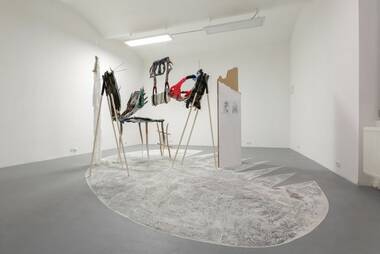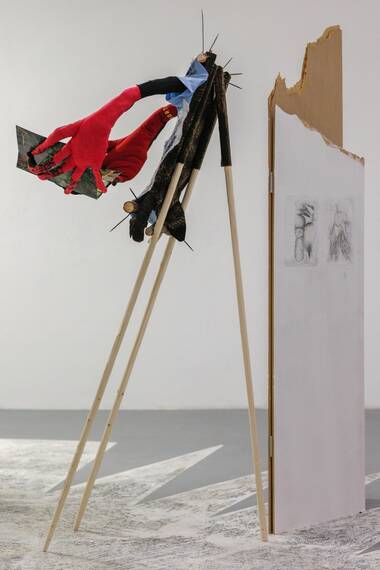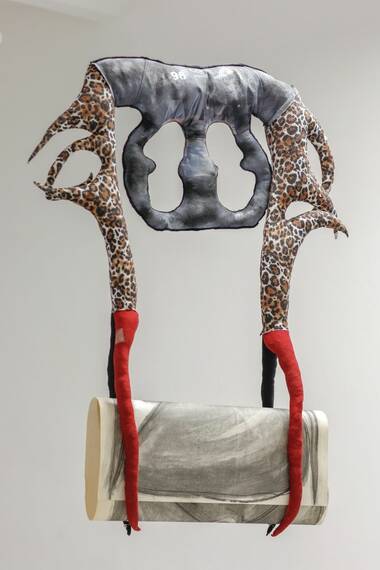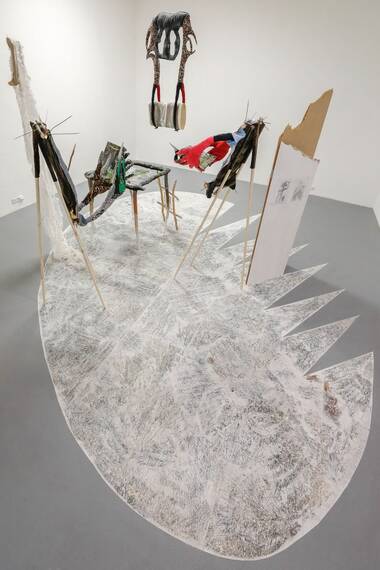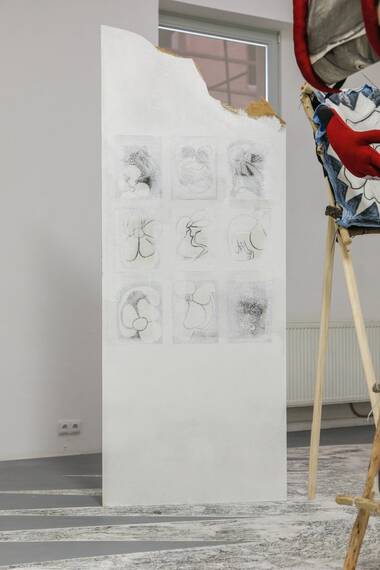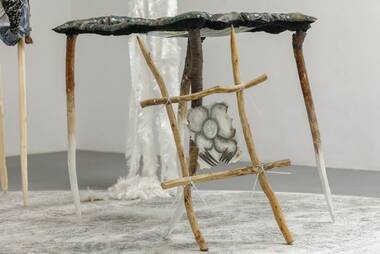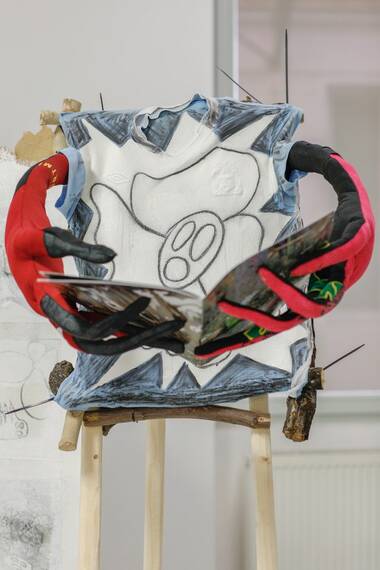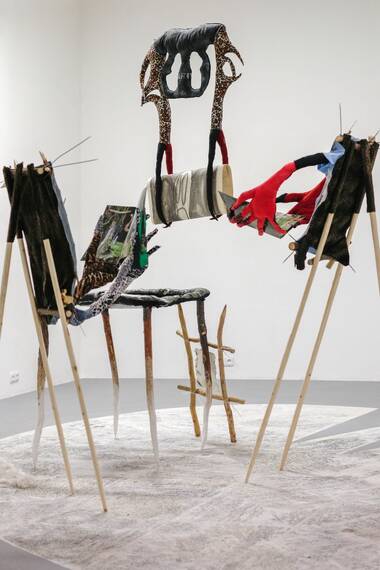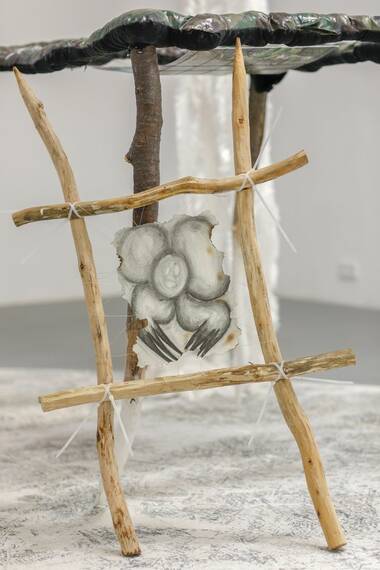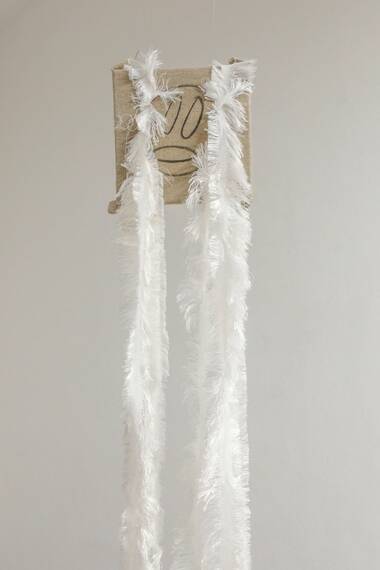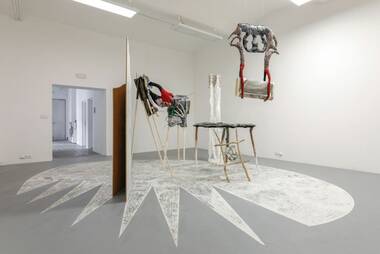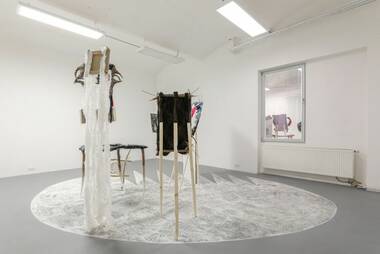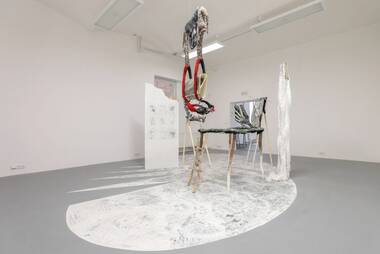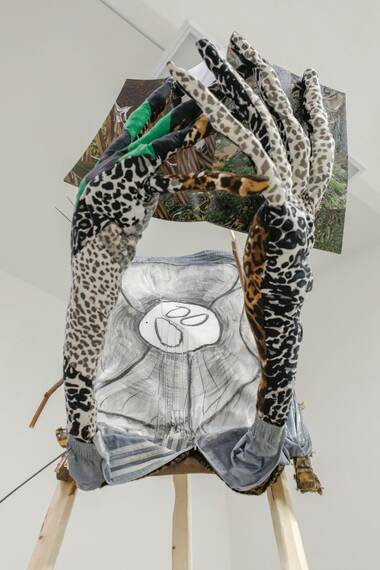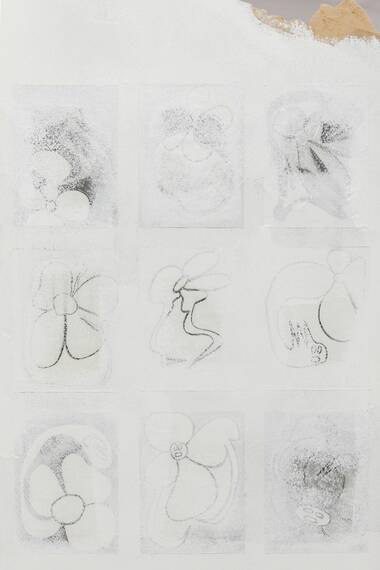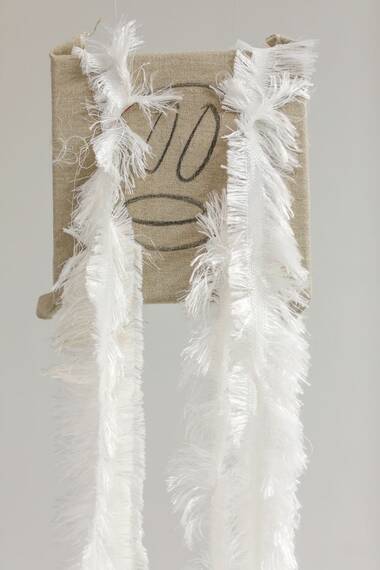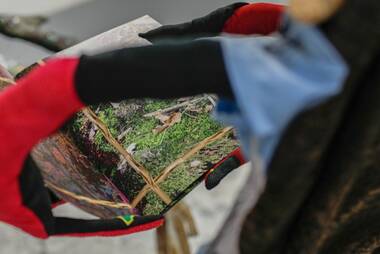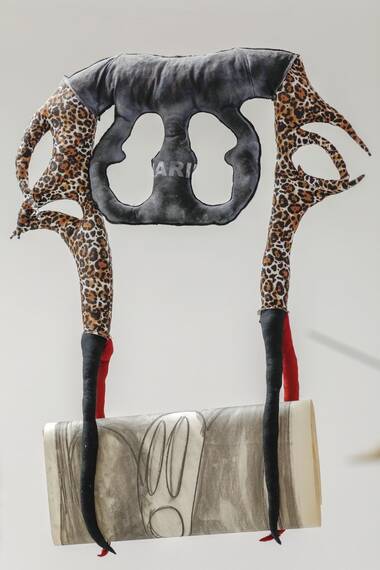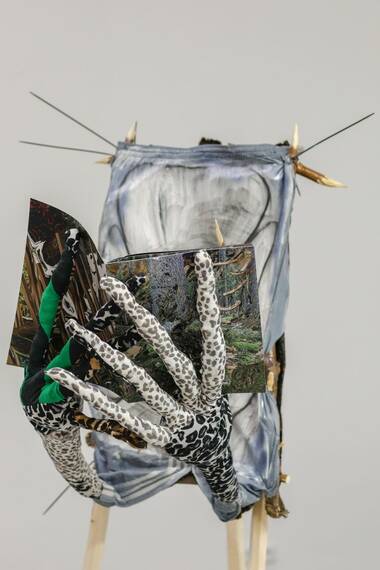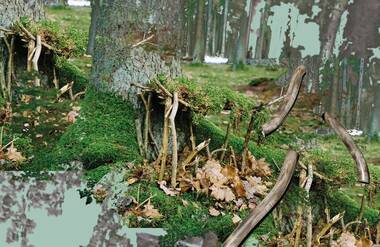Robin Seidl: Terraformation
18. 6. – 11. 7. 2021
opening: 17. 6. 2021 from 6 pm
curator: Dušan Zahoranský
In the 1970s, chemist James Lovelock and microbiologist, Lynn Margulis developed the Gaia theory about the earth as complex organism, which is self-regulating and has the goal to create and maintain conditions for life on the planet. An example is how the activity of photosynthetic bacteria four billion years ago turned the Earth into an oxygenated planet, which supported the evolution of the first, more complex living organisms – eukaryotes.
We could say that Václav Klaus is also a hypothetical advocate of the Gaia theory with his revolutionary idea of the Blue planet. He would probably be the leading figure of the “ultra pragmatic” section of this movement, which proclaims that the Planet has never been managed better than the way we, white men, have taught it. It is undeniable that my generation has a significant share in the acceleration of the extinction of living species, and, unfortunately, our ex-president is not the only, and far from the most influential figure of this all-planetary movement.
Robin Seidl visualises scepticism, which is an unavoidable emotion of the present. The colour tone in the Jelení Gallery is one of an extinct fire right after a furious summer storm. Although the earth around the cooled off rocks is striking, all we have left from the warm feeling of a burning fire are wet pants and burnt thermo underwear. The dominant colours are flaming Chromium oxide, light green cobalt, gray and silver, but, unfortunately, there is not even a glimpse of the optimistic Yellow Nickel or Coral red.
For the exhibition Terraforming, the artist prepared a composition of artefacts, which create the feeling of a household – plants. We can walk around this situation as if we were observing someone’s home and viewed it through transparent walls. What is partly a creature, partly decorative greenery, is browsing through a magazine about forest hide-outs right in front of us. The artist recycles tree stumps and branches, but uses minimal amount of conventional art materials such as synthetic colours, epoxy, or digital technology.
The artist’s last work is inspired by the novel “Stalker” (Машина желаний in Russian) by Boris and Arkady Strugatsky, which was the base for the screenplay of the eponymous film by Andrej Tarkovsky (1979). Robin borrows the image of a collector of undefined objects, which appeared on the Earth following a visit from an unknown civilization. This time, the visit comes from the future. “The Plant” aims to establish harmony between people and the rest of living nature. The fact that it travels in time, gives it the strength to change the course of history and it can help us avoid an ecological catastrophe. Unfortunately, the change is only symbolic.
In Robin’s story, it is certainly no eminent beauty that flies in from outer space, but a viable weed. It was able to adapt to the devastated living conditions, absorbed all the dirt and now wears a menacing smile. The artist does not glamorize the future planetary organisms. He rationally accepts our ability to destroy and damage our environment as a fact, which is inherent to human society and which is better to learn to work with than to be completely ignored.
Philosopher and writer Dorian Sagan describes the following image in an essay written in cooperation with the already mentioned microbiologist Lynn Margulis:
“Imagine a child of a present or future culture inculcated from childhood to believe that the planetary surface formed a real extension of her person…. Imagine this child is picnicking. She believes her environment to be part of her self. The grass on which she sits is a patch of tissue lining the inside of the superorganism of which she forms a part. The bark at her back, the dragonflies, the birds, the clouds, the moist air, and the ants tickling her foot – all these sensations represent, from her point of view, self-perception. When she pulls her T-shirt over her knees, this is no longer human, but one locus of sensation within the kaleidoscopic entrails of a planet-sized photosynthesizing being.”
In Robin’s current installation, the tree stumps and branches are dressed in t-shirts and sweat shirts. It is up to us to feel them on us as well.
Curator Dušan Zahoransk
(transl. Vanda Krutsky)
---
TOLLMANN, Vera, BOAZ, Levin (eds.) PROXY POLITICS, Power and Subversion in a Networked Age, ARCHIVE BOOKS, 2017
Margulis, Lynn, and Sagan, Dorion, 2007, Dazzle Gradually: Reflection on the Nature of Nature, Chalsea Green, page 250 – 211.
Robin Seidl is an intermedia artist who examines our late capitalistic information society, from the perspective of a compassionate amateur botanist. Everything we do on the Earth can be viewed as a certain form of organic, although currently rather catastrophic, process. One of Robin’s themes, for example, is fashion and clothing as the means for self-destructive identification.
He recycles sweatshirts and t-shirts, and creates fetish objects from them – hunting trophies without the victim. In his current exhibition, he invites the visitors to a botanical corner with a unique type of plant – a flower that visits us from the future and has the ability to interfere against the flow of time and cure our present. Robin studied at the Faculty of Arts in Ústí nad Labem, and currently he is a student in Pavla Scerankova’s and Dušan Zahoransky’s studio at the Academy of Fine Arts in Prague.
The program of the Jeleni Gallery is possible through kind support of Ministry of Culture of the Czech Republic, Prague City Council, State Fund of Culture of the Czech Republic, City District Prague 7, GESTOR – The Union for the Protection of Authorship
Partners: Kostka stav
Media support: ArtMap, jlbjlt.net, UMA: You Make Art
